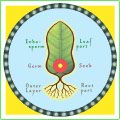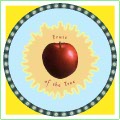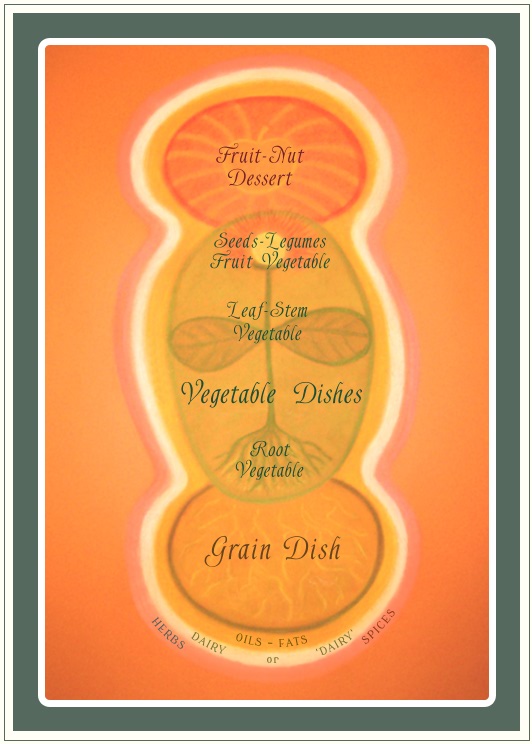This archetype helps us to combine various dishes together
into a balanced meal. This is not the only possibility, but this approach
has an advantage that one doesn't need a calculator with the aim to see if
the meal consists of all necessary amounts of nutrients. What one needs is
to become familiar with the basic groups of foods of plant origin with the
aim to become capable to combine them in a harmonious manner. We need this
because we take the plant as a model to create a new ‘plant’ – we could even
say to create a new ‘being of the meal’. With this model we can see if this
new ‘plant’ has all the necessary parts or if something is missing. [1]
However, this doesn’t mean that we need to start with creating completely
new dishes. Although cookbooks are available (mainly in German) which are
based on such an approach to nutrition as is presented in this website, this
is not the only way to learn to create balanced meals. Numerous recipes for
the dishes in existence already have some elements of a balanced meal. All
we need to do is to add or remove specific ingredients to get a truly
balanced meal.
Among dishes from various traditional food cultures we can even find such
which have all the elements of a balanced meal. Nevertheless, we can always
adapt them, if necessary, to changing circumstances in which we live and to
personal preferences of the people for whom we cook, with the help of the
approach presented in these nutritional guidelines.
Another way is to make more balanced versions of the popular dishes (such
as pizza, pasta, etc). The advantage of this approach is that people are
already familiar with the dishes. The biggest challenges are in the cases
where potato is the main ingredient, or where they like to eat dishes made
with the white flour. Here we need to use the method of gradual substitution
of white flour with whole flour, or potato with grain [2]
in combination with some persuasion. [3]
In this manner we might be capable of
overcoming the resistance and able to create more balanced dishes.
The Composition of a Meal
You can see in the main picture the threefold division in the overall meal structure:

The Grain dish is the base of the meal. The reason why
whole grains are taken as the base of the meal is – as you can see in the
ARCHETYPE OF A GRAIN – the fact that they are the most balanced food in
their inner structure. This characteristic enabled them to become the staple
food of humanity. You can choose whichever grain you like, although it is
better if you use a variety of grains to avoid one-sidedness. If you wish
you can eat them according to the
WEEKLY RHYTHM OF SEVEN GRAIN.

The Vegetable dish(es) is/are the
body of a meal. As a part of a balanced meal we can prepare:
- One vegetable dish: soup or salad or …
- Two vegetable dishes: soup and salad; side dish and salad; …
- Three vegetable dishes: soup, side dish and salad; …
- We can also combine grain and vegetables in one dish: risotto; one-pot
dish; etc.
With the aim to create balanced dishes we use the
PRINCIPLE OF THREEFOLD PLANT as the main help and guidance.

The Dessert is the 'fruit of a meal', made from fruits and
nuts (as the key ingredients) growing mainly on trees and bushes, such
as apples, pears, blackberries, hazelnuts, and so on. The dessert is satisfying our need for sweetness.
[4] For this purpose we use
fresh or naturally preserved
fruits (including natural sweeteners), and other wholesome ingredients
presented in HOLISTIC FOOD 'PYRAMID'.
♣ For help on how to create a balanced meal see
EXAMPLES OF BALANCED MEALS
Use of Other Food Groups
The three surrounding layers in the picture represent
the following foods which can be used in the preparation of any dish:
[5]
- Oils and fats (orange envelope around three main
dishes)
- Dairy products or their substitutes (white envelope)
- Herbs and spices (pink envelope)
These foods add flavour and enrich taste and for that reason they are an integral part of a balanced meal.





